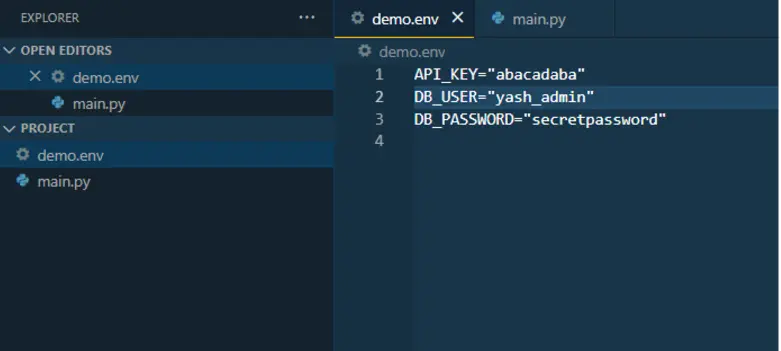In modern Python development, it is essential to securely manage configuration settings, API keys, and sensitive data. This is where .env files come into play. .env files provide a structured and secure way to manage environment variables, ensuring that your sensitive data is not hardcoded in the source code. In this guide, we'll delve into creating and using .env files in Python.

What is a .env file in Python?
An .env file is a simple text file that contains key-value pairs that represent configuration settings. These files are widely used to store sensitive data such as API keys, database credentials, and application configurations. By using .env files, developers can separate sensitive information from the code base, simplifying management in different environments (e.g. development, staging, production).
Why use .env files in Python?
- Security: Keeps sensitive data out of your code base.
- Portability: Allows easy sharing of configurations between different systems.
- Flexibility: Simplifies the management of different environments without changing the code.
- Readability: Organize configurations in a clean and structured manner.
Configure and use .env files in Python
Step 1 – Create the .env file
Create a file called .env in the root directory of your project. Add your key-value pairs to this file.
Note: On Linux and macOS, we can use the “touch .env” command in the terminal to create the file.
Touch .env can also be used if the user wants to create it using the command prompt, which is not necessary if the user uses vs code or pycharm on macos.

Step 2: Install the python-dotenv library
The python-dotenv library is a popular choice for loading .env files into Python projects. Install it using
pip install python-dotenv
Step 3: Load variables from .env file
In your Python code, use python-dotenv to load the variables
You can mention the path of the .env file using the load_dotenv() method.
For example, load_dotenv(:C/projects)
import os
from dotenv import load_dotenv
# Load variables from .env file
load_dotenv()
# Access the variables
api_key = os.getenv("API_KEY")
user = os.getenv("DB_USER")
password = os.getenv("DB_PASSWORD")
print(f"Your API key is: {api_key}")
print(f"User is: {user}")
print(f"Password is: {password}")

Best practices for using .env files
- Exclude from version control: Add .env to your .gitignore file to prevent accidental commits.
- Use descriptive names: Make sure variable names are clear and consistent.
- Avoid encoding defaults: Rely on .env for sensitive data instead of encoding alternative values.
- Provide a .env.example: Share a sample file (without sensitive data) with collaborators to clarify the required structure.
Conclusion
Using .env files in Python is a best practice for securely managing sensitive information such as API keys, database credentials, and other settings. By leveraging the python-dotenv library, developers can easily load these variables into their projects, ensuring a clear separation between sensitive data and the code base.
This approach improves security, improves portability, and enables seamless configuration in different environments such as development, staging, and production. Following best practices, such as excluding .env files from version control, using friendly variable names, and providing an .env.example file, can further streamline collaboration and reduce the risk of exposing sensitive data.
Whether you're building a small project or a large-scale application, incorporating .env files into your workflow ensures an organized and secure way to manage project configurations.
If you are looking for an online Python course, explore: Introduction to Pytdear
Frequently asked questions
Answer. An .env file is used to store environment variables such as API keys, database credentials, and other sensitive information securely. It helps keep this data separate from the source code, improving security and organization.
Answer. .env files often contain sensitive information, such as passwords or API keys. Including them in version control could expose this information to unauthorized users. Use a .gitignore file to prevent .env files from being pushed to repositories.
Answer. The python-dotenv library makes it easy to load variables from an .env file into your Python application. Simplifies the process of managing environment variables and reduces the risk of encrypting sensitive information.
 NEWSLETTER
NEWSLETTER






